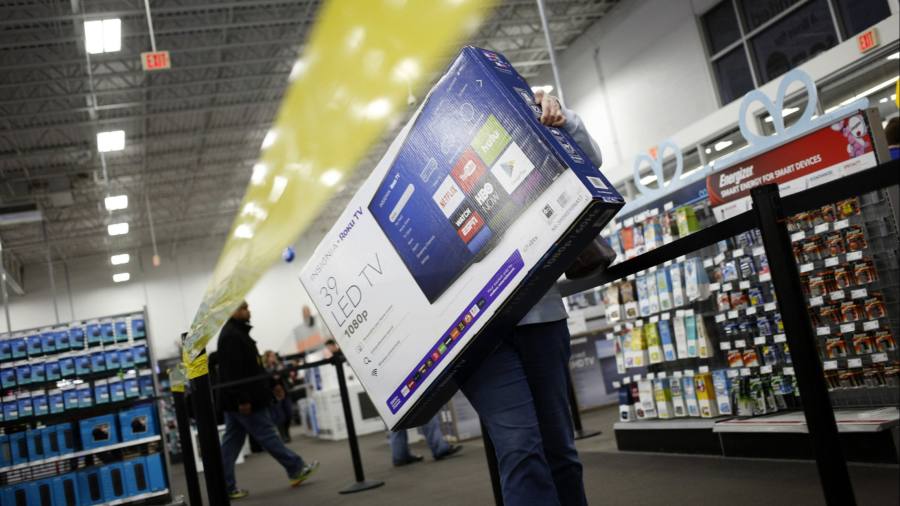
Receive free US society updates
We’ll send you a myFT Daily Digest email rounding up the latest US society news every morning.
The US, they say, is a place where luxuries are cheap and necessities costly. For many Americans, goods such as TVs, computers and cell phones are more accessible than ever. But commodities and services seen as central to thriving middle-class US family life — including affordable housing, healthcare and childcare — are harder to attain.
That may explain why more Americans feel pessimistic, according to a recent Pew survey. That is despite economic indicators suggesting the country is more prosperous than half a century ago.
Conservative public policy commentator Oren Cass says traditional benchmarks, such as gross domestic product, are misleading. He has proposed a cost of thriving index.
Cass is focused on the American middle class — a group typically including tradespeople, small-business owners and skilled factory workers. He compared the median income of men with the costs of food, housing, college tuition, transportation and health insurance.
In 1985, a man earning a median wage of $443 a week could support a family of four by working just 40 weeks. In 2022, the same person earned a higher weekly median wage ($1,219). But he would have to work 62 weeks to afford the same things. These included a nutritious diet, a three-bedroom dwelling, a family health insurance plan, a car and state university tuition.
Cass’s index suggests quality of life has declined 36 per cent over four decades. These findings should be useful to businesses in defining and targeting customer groups. It points to declining disposable income in a key demographic. The problem is that the benchmark has flaws in its current form.
One problem is that Cass focuses exclusively on the median male worker. He ignores the rise of female employment and two-income households. The proportion of dual earners more than doubled between 1960 and 2000 to 60 per cent.
In addition, the figure for healthcare comprises employee and employer contributions. If you strip out the employer’s share, costs look less inflated compared with median wages. The same goes for higher education. The index does not factor in the fact that few students pay the full tuition price. A counter study argues once adjusted for the above and lower taxes are factored in, the median man is actually between 4 to 34 per cent better off.
To be sure, wage stagnation and soaring living costs are real issues. The US has one of the highest poverty rates among OECD countries. The methodology behind COTI needs refining, but its message is right. Middle-class Americans are feeling the squeeze.
The Lex team is interested in hearing more from readers. Please tell us what you think of the cost of thriving index in the comments section below.